'Isolation' - Margaret Nel
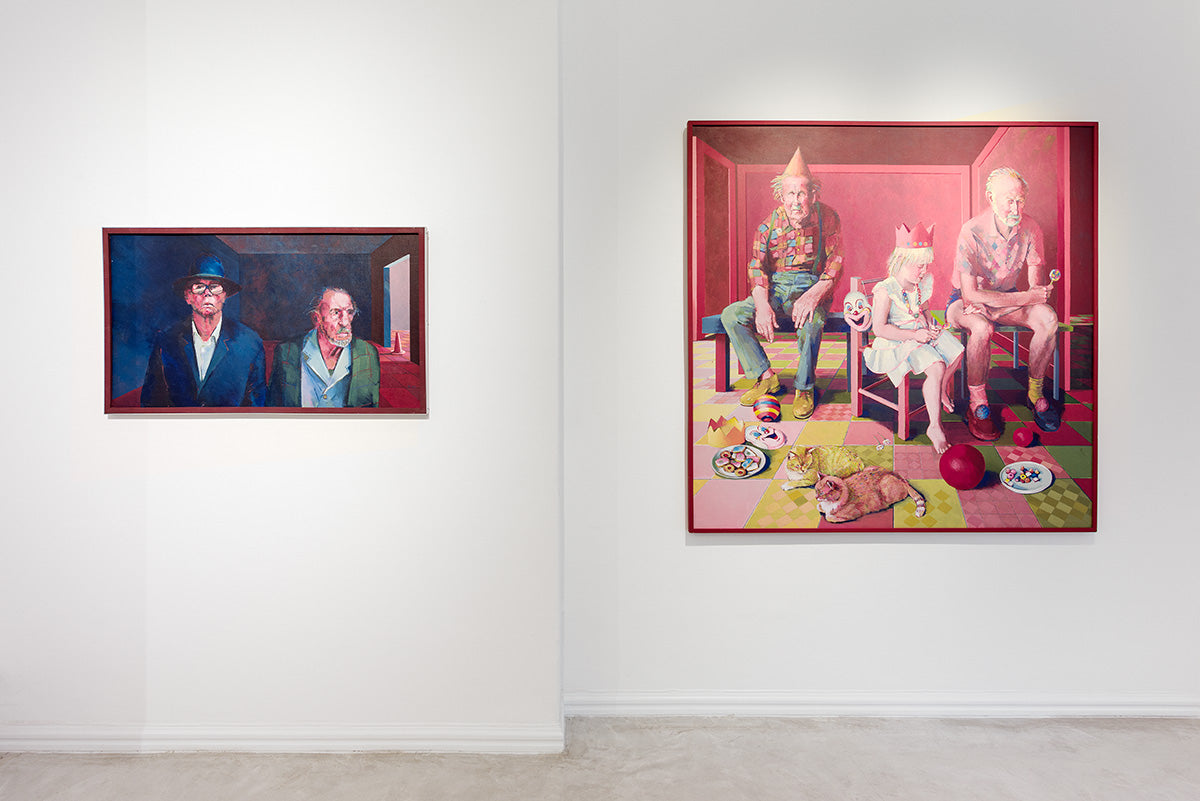
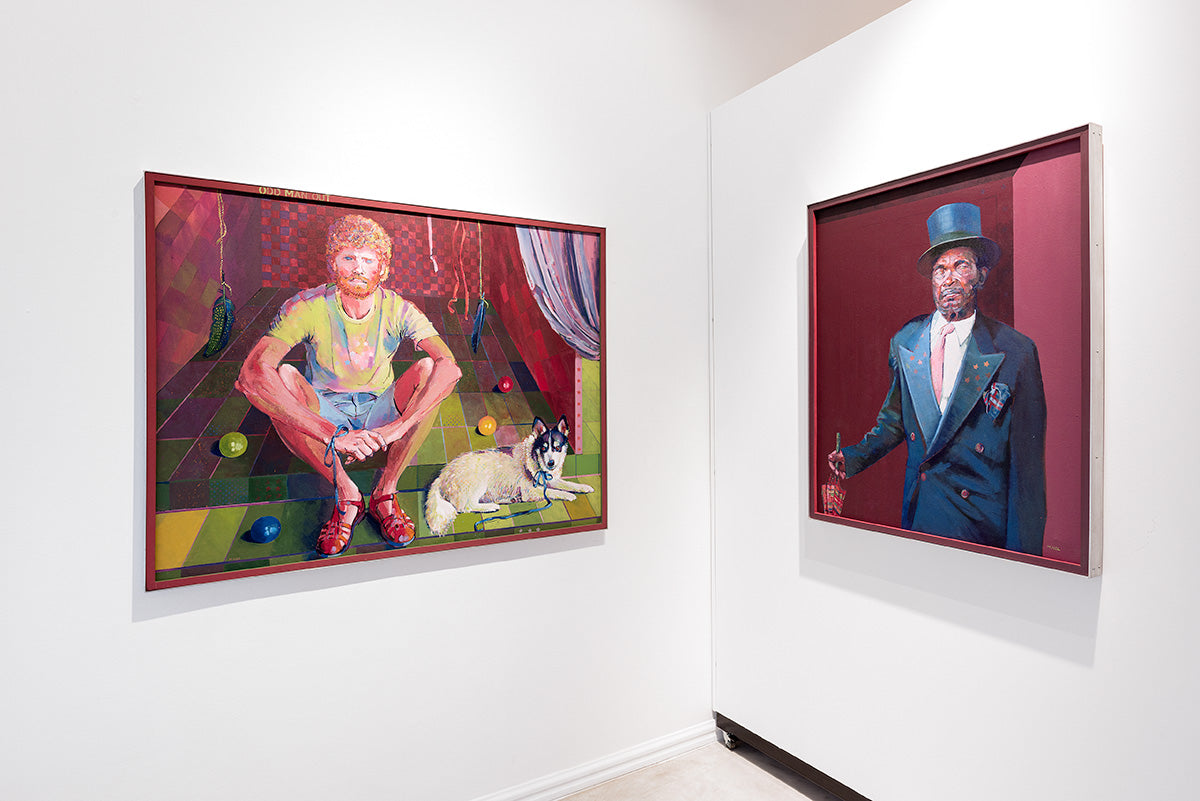
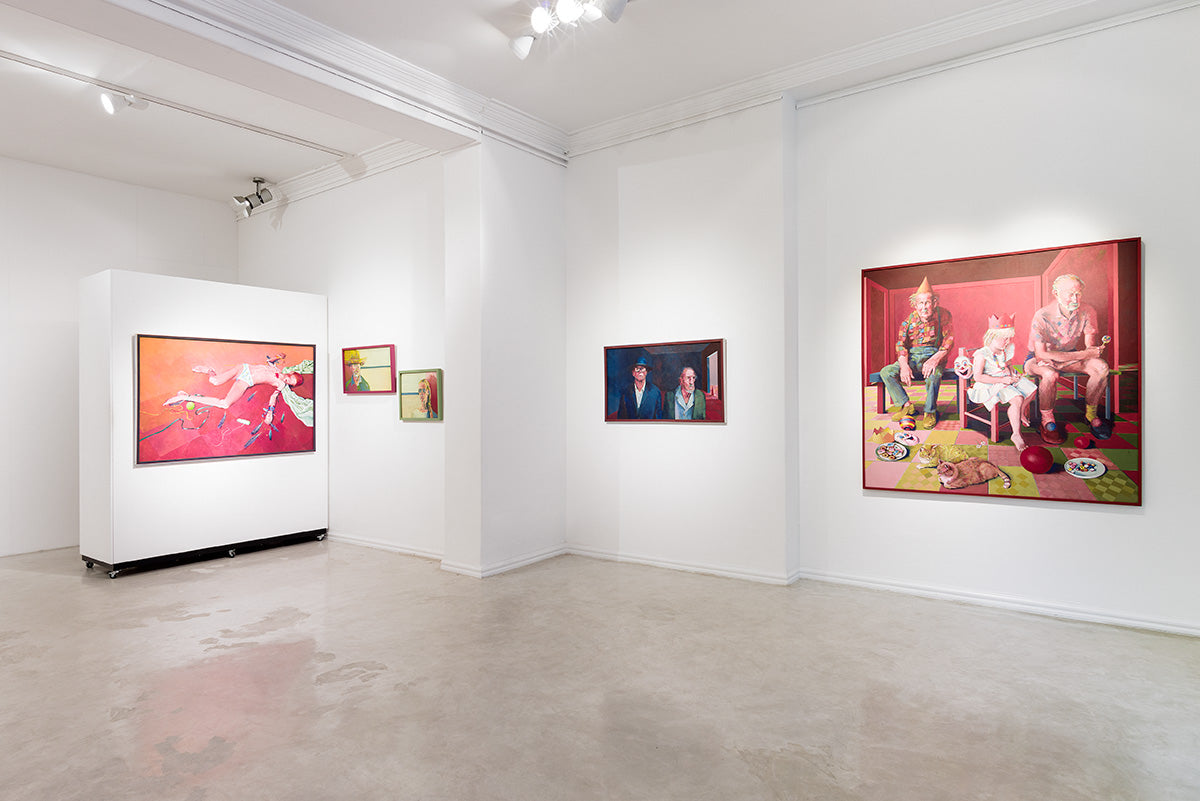

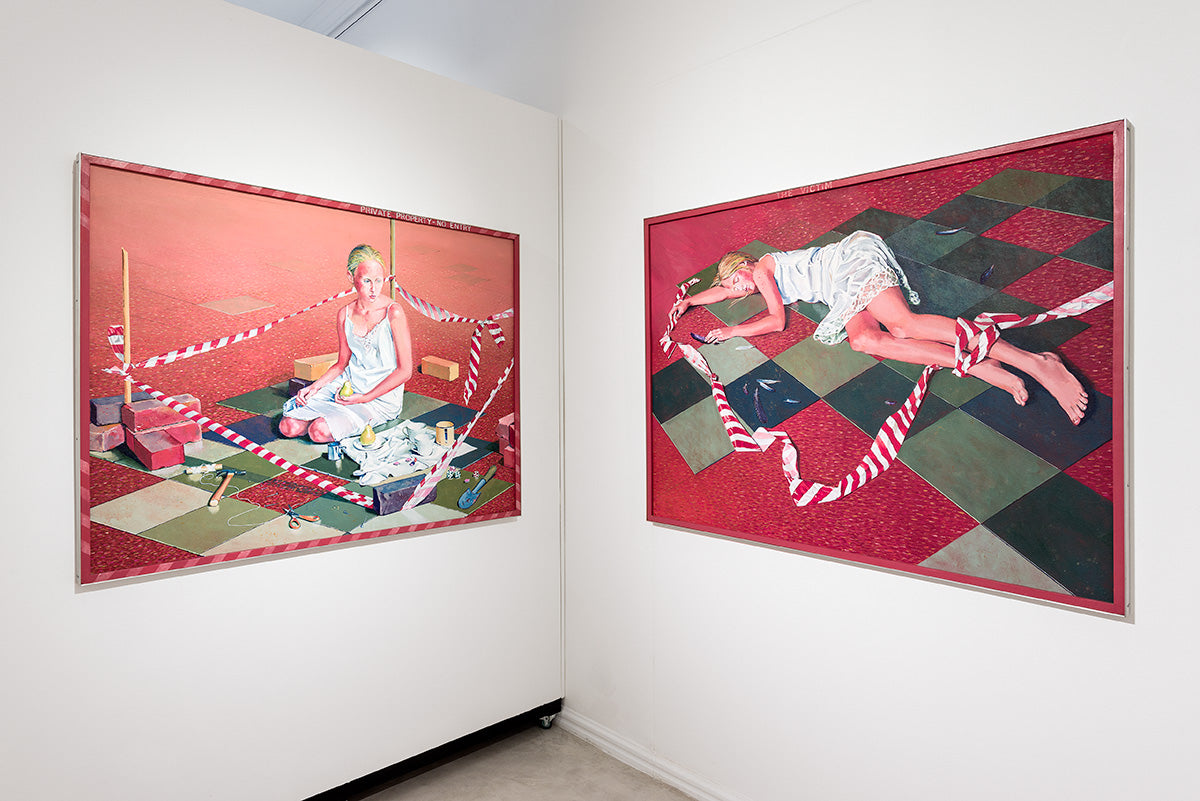
Collection: 'Isolation' - Margaret Nel
A Focus: 11 Paintings From 1976 - 2000
Margaret Nel
30.06.21 - 12.08.21
EBONY/CURATED, Cape Town
___
Corner Seat III is the last in a series of three works completed between 1974 and 1976 that all share a common conceptual departure point, as well as subject matter, with the artist using her own image for the figurative component of all three compositions. The two earlier companion pieces are currently housed in the ABSA bank and University of the Free State collections. Corner Seat III was purchased in 1976 by Dora Scott, renowned collector and patron of the arts who, together with her husband Prof. Frederik (Frik) Scott, was instrumental in the establishment of the Oliewenhuis Art Museum in Bloemfontein in 1989, and the promotion of local artists on a national level.
It is important to note that, although all three works use Nel as the figurative subject matter, the content should not be considered self-portraiture. In this particular work, Nel juxtaposes the seated female figure with a potted houseplant – the two elements acting as tense compositional counterpoints to one another, while also being symbolically interchangeable. The avocado tree, unnaturally constricted by its domestic vessel, becomes a symbol for stunted emotional growth or the premature limitation on personal potential.
Completed in 1977, Man Wearing a Straw Hat serves as the precursor, and companion piece to, Girl with a Plait – a set of portrait studies undertaken by Nel of her husband and of herself during the period when the couple resided in the remote coastal town of Langebaan in the Western Cape province of South Africa. Produced under very basic conditions, and without the aid of photographic reference – unusual for Nel – the works serve both as portraiture studies, as well as a documentation of a harsh and largely unhappy period for Nel.
The paintings are some of the earliest to incorporate Nel’s often-used depiction of exposed, sunburned skin as a metaphor for emotional vulnerability. While the title of the work, as well as dominant visual element contained in Man Wearing a Straw Hat alludes to an unforgiving climate, Nel similarly portrays herself wearing sunglasses in Girl with a Plait, furrowing her brow against the glare of the sun. The couple, connected thematically and compositionally, yet separated across two canvases, are each held captive against a distant, abstracted shore line. This bleak, hard-edged horizon, which would later be extensively incorporated into Nel’s Postmodern landscapes, is symbolic of both a hostile physical environment, as well as untenable psychological conditions.
Very few, if any, of Nel’s figurative works can be considered devoid of conceptual intent or autobiographical commentary and should, accordingly, never be considered as fully representational of any particular sitter. In contrast, Nel often purposefully highlights or even exaggerates distinctive aspects of the model’s appearance, such as a sunburned complexion, frown lines or unkempt hair, as signifiers that belie psychological trauma, physical deterioration or social malaise. So too in this work, originally titled Die Ontheemdes, which loosely translates from Afrikaans as ‘The Displaced’ or ‘The Dispossessed’, and later renamed No Exit to allow for greater universality in interpretation.
The two men at the centre of the composition were based on candid photographic snapshots of retirement home residents, taken by Nel while visiting a relative living at the same facility. As with all of Nel’s work from this period, the loose treatment of facial detail and the anonymity of the models capture a sense of dissociation and disorientation. The figures’ eyes, either partially voided or averted, suggest that they inhabit an entirely inward world, where they seem trapped in contemplation of either an inaccessible past, or an unattainable future.
After a decline in productivity of nearly a decade after initial early success, Nel’s output regained momentum and new-found direction on viewing the 1988 Cape Town Triennial which featured, most significantly for Nel, Penny Siopis’ Melancholia (1986), a symbolically-laden meditation on vanitas and colonial decline in Africa. Troupe I and II followed shortly thereafter, marking a watershed in both composition and subject matter via the introduction of multiple figures, spatial depth and symbolic elements bearing multiple interpretations.
Despite this technical and conceptual complexity, Troupe II maintains the same concern with mankind’s vulnerability that occupies Nel’s earlier work. Here we are confronted by an ensemble of performers modelled on Nel’s immediate family, their vaudeville costumes, props and theatrical setting in stark contrast to the scene’s distinctly uneasy atmosphere.
Much like the harlequins and acrobats of Picasso’s masterpiece La Famille de Saltimbanques (1905), this cast of entertainers are displaced, unable to function within the acceptable margins of society. For Nel, they represent the universal outcast, whose circumstances, whether cultural, financial or political, prevent access to mainstream social orders.
Study for The Ringmaster II serves as a preliminary work for a larger and more complex painting entitled Ringmaster II, which was included in the seminal 1991 edition of the Cape Town Triennial, later purchased by the Gauteng Provincial Administration (formerly the Transvaal Provincial Administration) and is currently housed in their Johannesburg headquarters.
Reworked over a decade after initial completion to include a simplified, stage-like spatial setting, the composition centres on a solitary male figure whose attire, trappings and titular role appear to prescribe a position of superiority or prestige. Upon closer inspection, the patriarch’s eyes seem to be clouded by cataracts, and his posture stooped within an ill-fitting double-breasted jacket. As with The Ringmaster I and II, as well as Troupe I, II and III, the Study for The Ringmaster II can be interpreted as a meditation on the folly and futility of power.
Completed just prior to South Africa’s democratic transition, Regina of the Famished Land acts as a counterpart to The Ringmaster II (1990), held in the collection of the Gauteng Provincial Government, and similarly explores the influence and corruption of power on both a personal and political stage. Whereas The Ringmaster II centres on a male subject, here Nel presents us with a solitary female figure, warding off the effects of an unforgiving African sun on a makeshift throne.
While the title of the work as well as the hue of her dress intimate royal status, be it self-bestowed or conferred by others, she appears to preside over a compromised and limited domain, potted plants making for a poor approximation of fertility in otherwise barren surrounds. The scene is littered with remnants of a colonial past, at once bearing symbolic significance yet serving no apparent function.
Read politically, the work may arguably be interpreted as commentary on the debilitating legacy of colonial and apartheid policies, with Regina the symbolic heir to resources already spent. Again, when considered against claims of contemporary political corruption, she may also be construed as a perpetrator hoarding the spoils of her authority. Regina of the Famished Land was selected for inclusion in the 1993 Momentum Art Competition.
Painted towards the end of the same period that produced Troupe I, II and III, The Ringmaster I and II, and Regina of the Famished Land, Odd Man Out also employs theatrical symbolism and stage-like mise-en-scène to allude to themes of ostracisation and social displacement.
The central figure, modelled on Nel’s son-in-law, assumes the guise of a court jester – his eyes oddly opaque, juggling balls strewn about a claustrophobically hemmed-in arena. Beside him lies a mongrel circus dog, a symbol that frequently appears in Nel’s Postmodern work to refer to the notion of domestic security and structure. Ribbons and guineafowl feathers are seen suspended from the makeshift structure, denoting constrained freedom and arrested innocence.
As with Failed Flight from the Ravaged Land and Study for the Failed Flight, Failed Flight from the Stricken Land demonstrates Nel’s Postmodern preoccupation with incorporating Greek mythology in complex and densely symbolic compositions. Here we see a prone, prepubescent Icarus – modelled on one of Nel’s own teenage sons – who, having failed to heed Daedalus’ warning, lies lifeless in a barren African wasteland.
The work presents dualistic commentary on personal and political transformation, reading as both an observation of the difficult transition from childhood naiveté to adult maturity, as well as the desire to escape untenable socio-political circumstances. The latter interpretation may be considered in context of pre-democratic South African conditions, or indeed from the perspective of any volatile political situation, past or present. More personally, the figure is intended as a personification of the artist herself – a child, ill-prepared by her guardians for her journey ahead.
Private Property is one of several Postmodern paintings that centre on the solitary, vulnerable pubescent female figure. Inadequately clothed, sunburned and seemingly entirely alone, the young woman has crudely demarcated a space of her own within an unforgiving landscape. Flimsily fashioned from bricks, barrier tape and tiles, the scene recalls the childhood play instinct to re-create a dwelling from rudimentary materials – and is symbolic of the universal need for physical and emotional safety.
An early demonstration of Nel’s ongoing concern with issues of gender-based victimisation, and in particular the realm of domestic abuse, The Victim recasts the same young female figure that features in many of Nel’s Postmodern works, as a casualty of some undefined trauma. While modelled on her teenage daughter at the time, the figure of the ill-fated ingénue serves as a personification of the artist herself.
Barrier tape has often served Nel as a symbol for emotional restriction or incapacity, while feathers represent the loss of personal freedom and ambition.
On a deeper level, the work explores the loss of innocence resulting from inappropriate sexual attention that many females experience during early puberty. The pears, teacups and confectionery that comprise the girl’s makeshift picnic, also serve as symbols of her nascent sexuality and the potential exploitation thereof.
More exhibitions
-
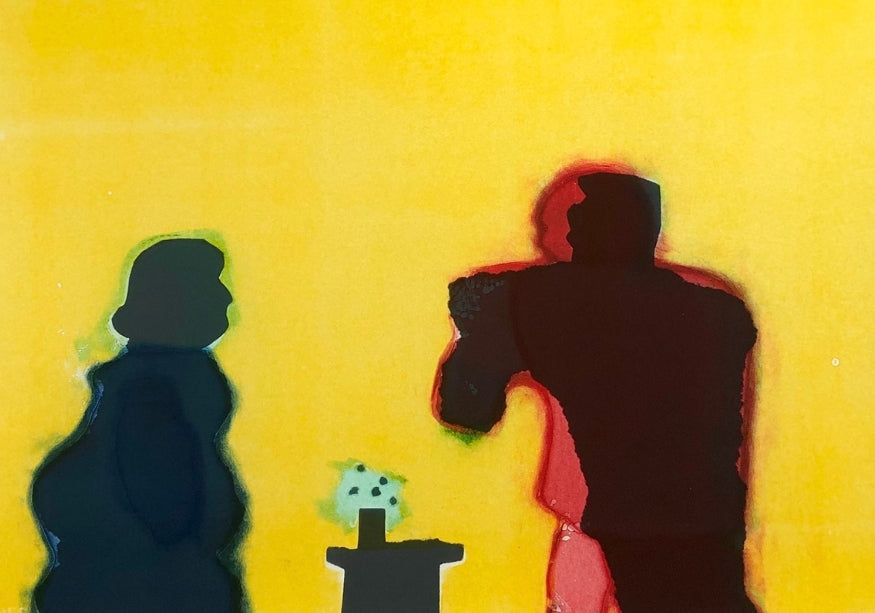
'Modern Masters III' - Group Exhibition
Modern Masters IIIGroup Exhibition01.08.19 - 31.08.19EBONY/CURATED, Loop Street ___ Modern Masters III...
-
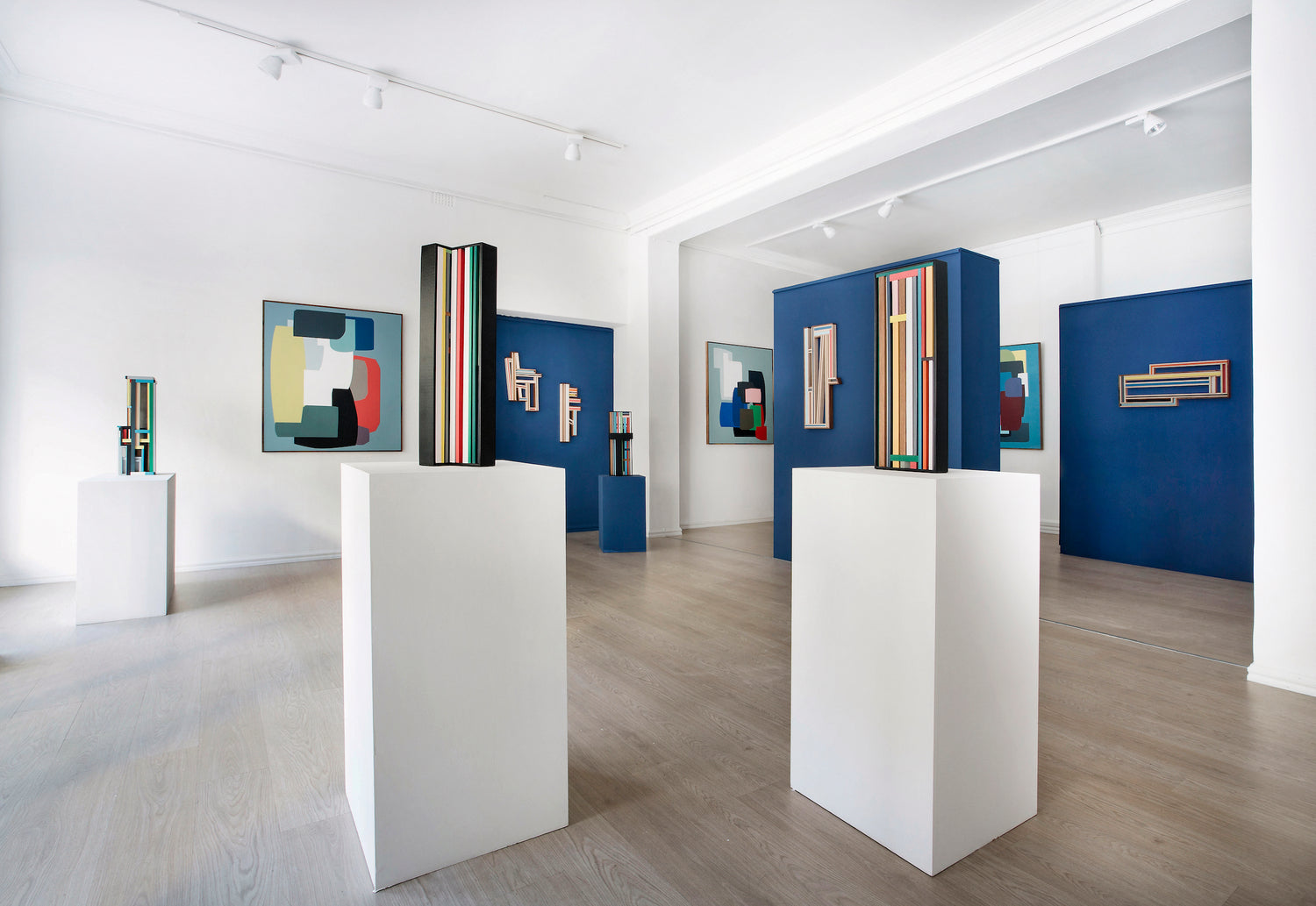
'Tipping Point' - Hugh Byrne
Tipping PointHugh Byrne05.07.17 - 02.09.17EBONY/CURATED, Cape Town___ "I look for visual tensions...
-
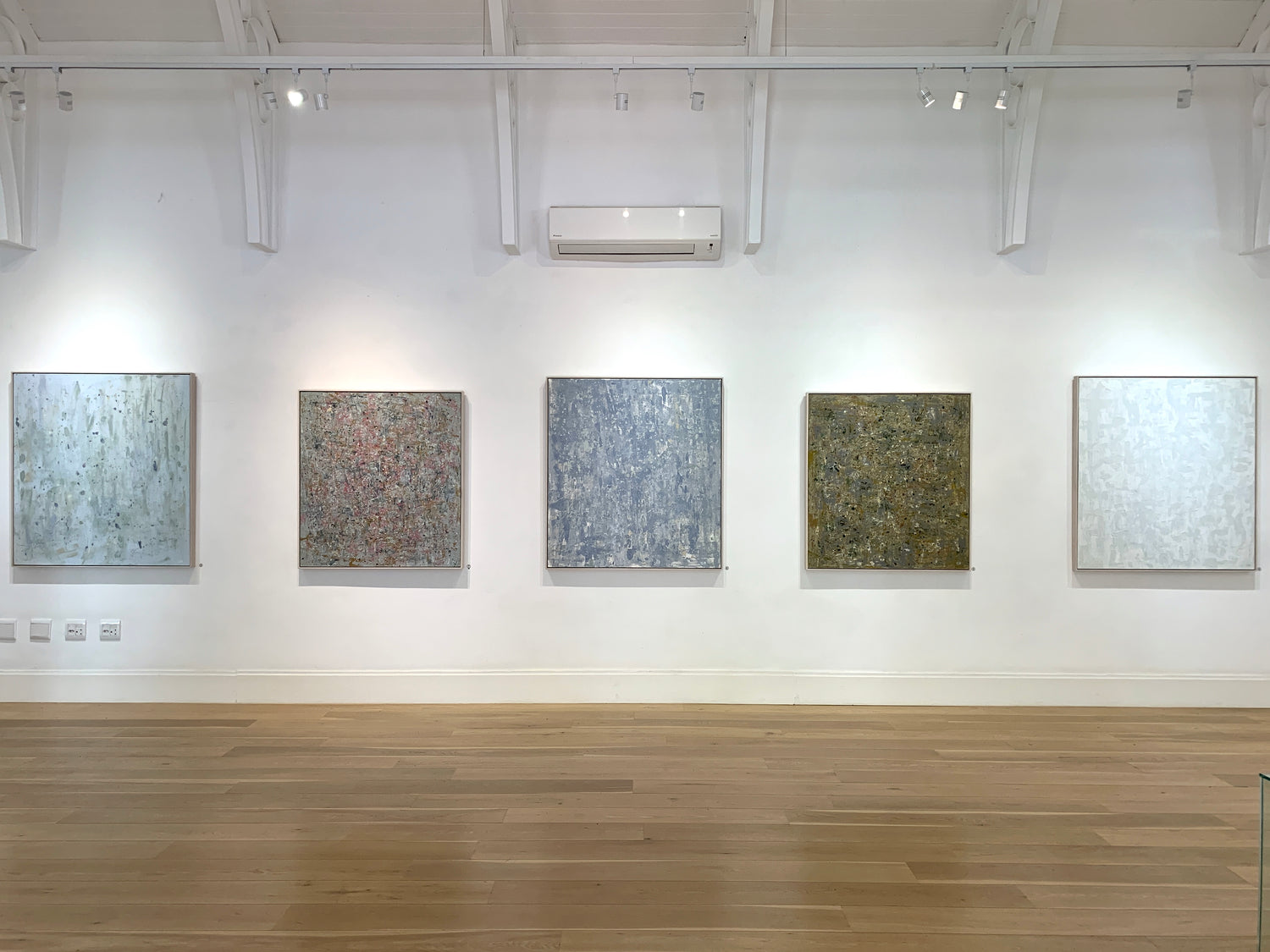
'A Quiet Place' - Orly Rabinowitz
25.01.20 - 29.02.20Bordeaux House, Franschhoek ----- This body of work is of...



